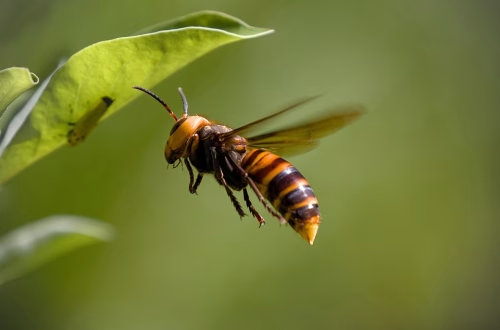Summary:
Wildlife control services are essential for managing unwanted animals that pose risks to property, health, and ecosystems. The cost of these services varies based on factors like the type of pest, severity of the infestation, and the methods used. Homeowners, business owners, and property managers are most affected by these costs. Understanding the legal framework, effective methods, and long-term benefits of professional wildlife control can save time, money, and prevent further damage. Readers should care because proactive pest management ensures safety, protects investments, and complies with state and federal laws.
What This Means for You:
- Wildlife control costs can significantly impact your budget, so it’s important to get multiple quotes and understand the services included.
- Neglecting pest issues can lead to higher costs in the long run due to property damage and health risks.
- Choosing a licensed and experienced pest control provider ensures effective, safe, and compliant solutions.
- Future trends in wildlife control may include eco-friendly methods, so staying informed can help you make better decisions.
Wildlife Control Services Cost Explained:
Wildlife control services involve the removal, prevention, and management of animals that invade residential, commercial, or agricultural properties. These services are often necessary when wildlife such as raccoons, squirrels, bats, or birds cause damage or pose health risks. The cost of wildlife control varies widely depending on the species involved, the extent of the infestation, the location, and the methods used for removal and exclusion. On average, homeowners can expect to pay between $150 and $500 for basic services, while more complex cases can cost upwards of $1,000.
Factors influencing the cost include the need for humane traps, exclusion devices, repairs to property damage, and follow-up visits. Additionally, compliance with state and federal wildlife protection laws, such as the Endangered Species Act, can add to the expense. Understanding these costs helps property owners budget effectively and ensures that the problem is resolved safely and legally.
Types of Pest Issues:
Wildlife control services address a wide range of pest issues, each with its unique challenges and costs. Common culprits include raccoons, which often invade attics and cause structural damage; squirrels, which chew through wiring and insulation; and bats, which carry diseases like rabies and histoplasmosis. Birds, such as pigeons and starlings, can create health hazards through their droppings and nesting materials. Larger animals like deer or coyotes may also require specialized management strategies.
State and federal laws play a significant role in how these pests are managed. For example, the Migratory Bird Treaty Act protects certain bird species, making it illegal to remove nests during specific seasons. Similarly, bats are protected in many states due to their ecological importance. Property owners must work with licensed professionals who understand these regulations to avoid legal penalties and ensure humane treatment of wildlife.
Common Pest Control Methods:
Effective wildlife control methods include exclusion, trapping, and habitat modification. Exclusion involves sealing entry points to prevent animals from entering buildings. This can include installing chimney caps, repairing roof vents, and sealing gaps in foundations. Trapping is used to remove animals already inside, with live traps being the most humane option. Once captured, animals are relocated to appropriate habitats, following local regulations.
Habitat modification is a proactive approach that reduces the likelihood of attracting wildlife. This includes securing trash bins, trimming tree branches near buildings, and removing food sources like bird feeders. Successful strategies often combine these methods to provide comprehensive solutions. For example, removing raccoons from an attic and then sealing all entry points prevents re-infestation.
Risks and Consequences:
Failing to address wildlife infestations can lead to severe consequences. Property damage is a major risk, as animals like raccoons and squirrels can tear insulation, chew electrical wiring, and damage roofing materials. These issues can compromise the structural integrity of a building and increase repair costs. Health risks are another concern, as wildlife can carry diseases such as rabies, hantavirus, and leptospirosis, which can be transmitted to humans and pets.
Legal consequences are also a possibility if wildlife control is not handled in compliance with state and federal laws. Unauthorized removal or harm to protected species can result in fines or legal action. Additionally, unresolved infestations can lead to recurring problems, as animals may return or attract others, creating a cycle that becomes increasingly difficult and costly to manage.
Choosing a Pest Control Service:
Selecting the right pest control service is crucial for effective and safe wildlife management. Look for providers with specialized experience in wildlife control, as general pest control companies may lack the necessary skills and knowledge. Licensing and certifications are important indicators of professionalism and compliance with regulations. Additionally, inquire about the methods used, ensuring they are humane and environmentally friendly.
Ask for detailed cost estimates and compare services from multiple providers. A reputable company will offer transparent pricing and explain the scope of work. Reading reviews and seeking recommendations can also help identify reliable professionals. Finally, choose a service that provides guarantees or follow-up visits to ensure the problem is fully resolved and does not recur.
People Also Ask About:
- What factors influence wildlife control costs? The cost depends on the type of animal, the extent of the infestation, the location, and the methods used for removal and prevention.
- How can I prevent wildlife from entering my property? Secure trash bins, seal entry points, trim tree branches, and remove potential food sources like bird feeders or pet food.
- Are wildlife control services safe for pets and children? Reputable services use humane and safe methods, but it’s important to follow their instructions to minimize risks during and after treatment.
- What should I do if I find a wild animal in my home? Avoid contact and call a licensed wildlife control professional immediately to handle the situation safely and legally.
- Can I handle wildlife removal myself? DIY methods are not recommended due to health risks, legal restrictions, and the potential for ineffective or harmful outcomes.
Expert Opinion:
Experts emphasize the importance of addressing wildlife issues promptly to prevent costly damage and health risks. They recommend working with licensed professionals who use humane and eco-friendly methods. Staying informed about local wildlife laws and trends can help property owners make better decisions and protect their investments in the long run.
Related Key Terms:
- wildlife control services near me
- cost of raccoon removal services
- bat removal and exclusion costs
- affordable squirrel removal services
- wildlife damage repair costs
- humane wildlife control methods
- state wildlife protection laws
Pest Control Disclaimer
This content is for educational purposes only and does not replace professional pest inspection, treatment, or safety advice. Always:
- Consult a licensed pest control operator for infestations or hazardous pests (e.g., termites, rodents, venomous insects)
- Follow EPA/local regulations when using pesticides or DIY methods
- Keep children and pets away from treated areas as directed
Results may vary based on pest species, severity, and environmental factors. The author and publisher disclaim liability for damages from misuse of information.
*Featured image sourced by Pixabay.com





